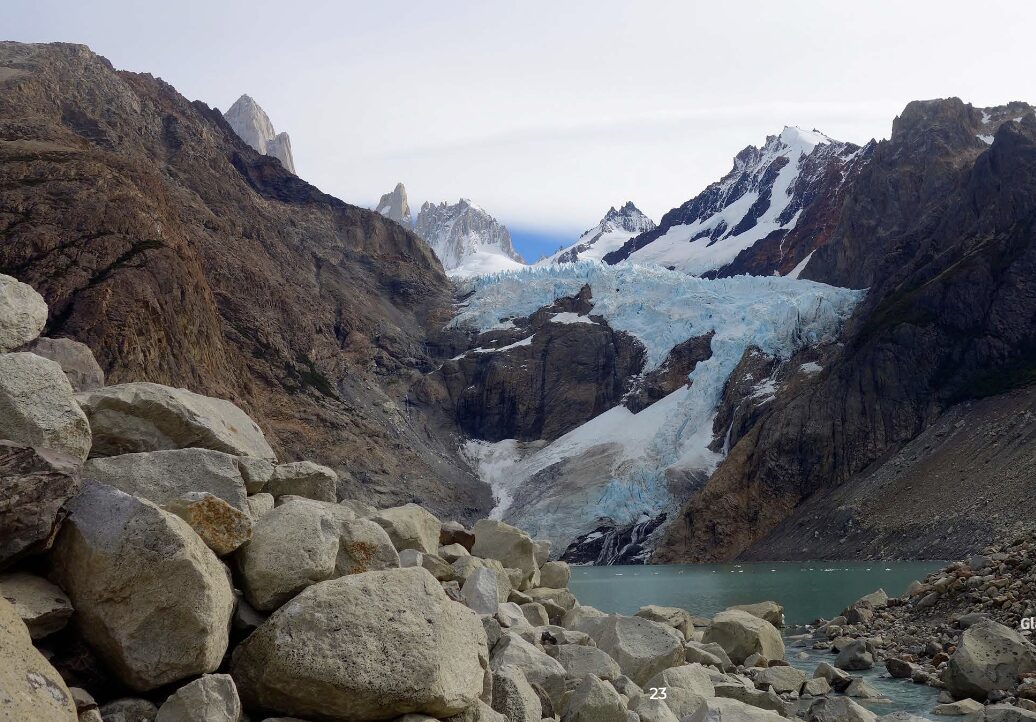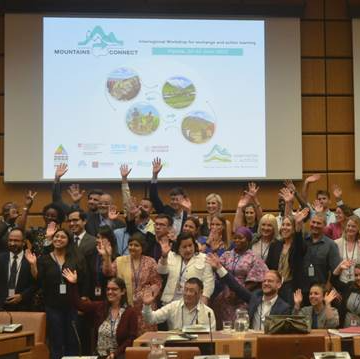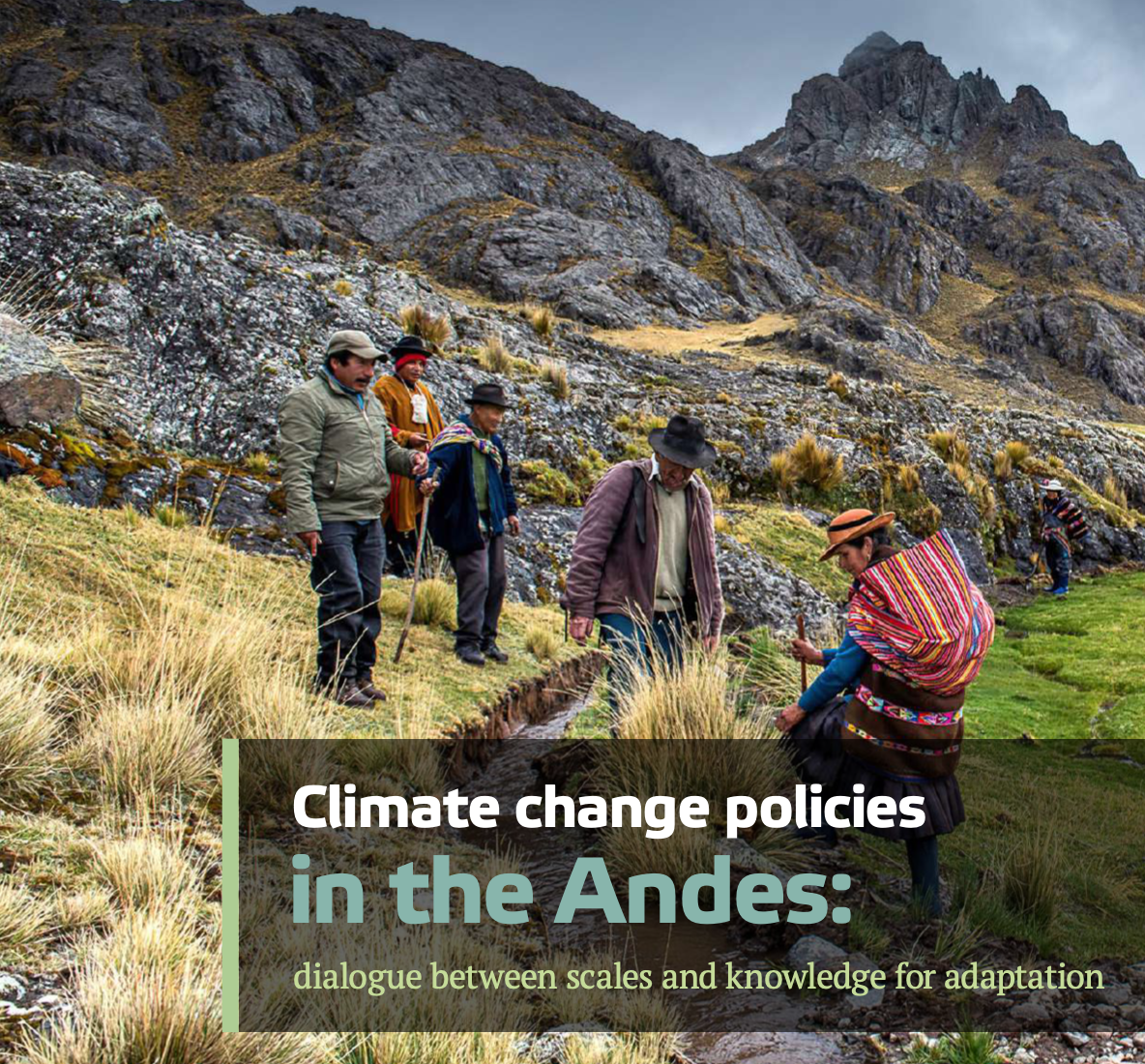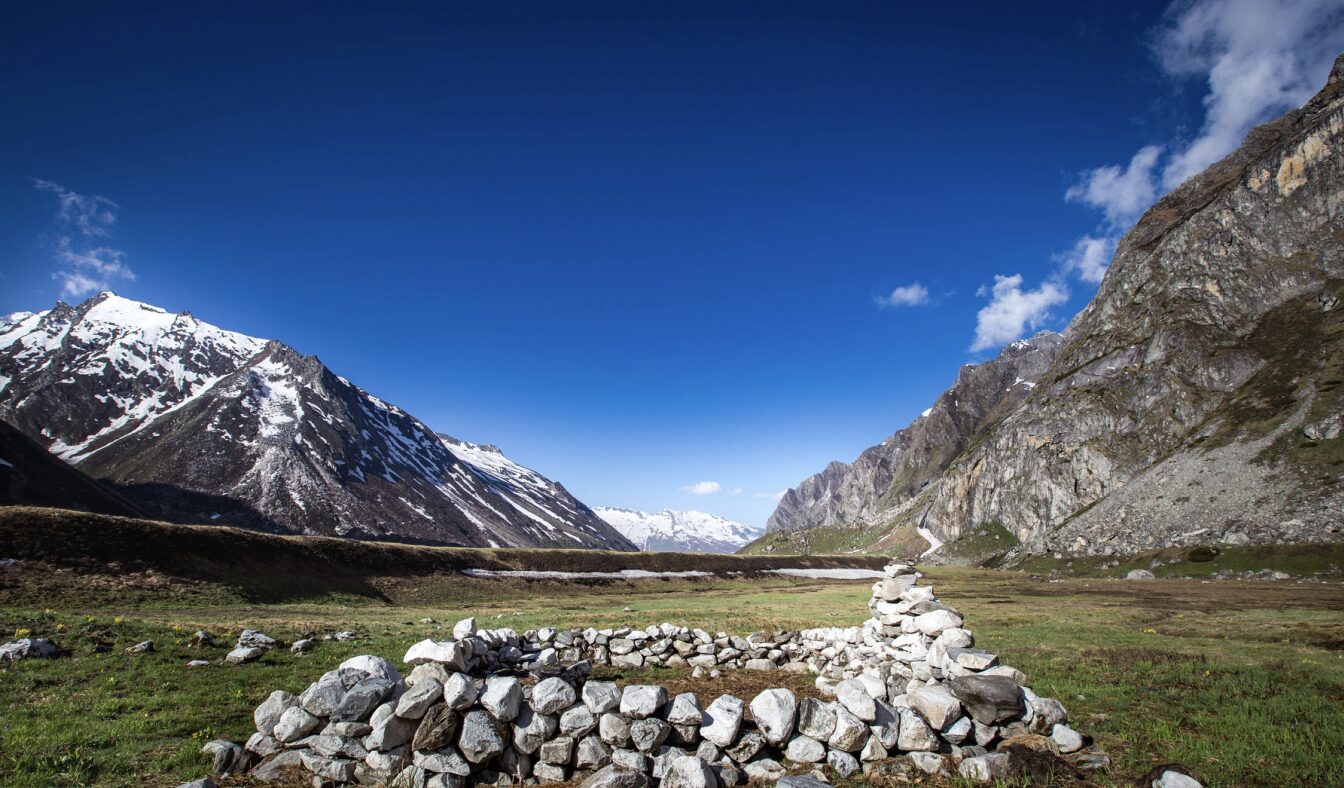Mountains Connect brief: Experience exchange between the Andes, Alps and Carpathians to explore mountain governance paths for climate resilient development

Introduction
In June 2023, UNEP, CONDESAN, the Permanent Secretariat of the Alpine Convention, and the Secretariat of the Carpathian Convention, organized a Study Trip of Andean Mountain Initiative (AMI) delegates to Europe to learn from each other about mountain governance, promote exchange with peers, and strengthen cooperation between the world’s regional mountain platforms. The trip that took place covered visits to three countries – Austria, Poland, and Slovenia – and was centered around sharing approaches and mechanisms for regional governance in mountain ranges for the benefit of people and ecosystems.
A series of meetings with AMI representatives and their counterparts from both mountain conventions, as well as field visits, provided opportunities to share the history and recent milestones of the AMI. Above all, participants learned from each other through collaborative formats, presentations and participatory meetings with diverse stakeholders. With an agenda focused on opening spaces for dialogue and cooperation, the visit of the AMI delegates allowed them to share experiences on the consolidation of governance platforms and the initiatives for sustainable development that are being carried out in the mountain ranges of both continents.
This article is an abridged version of the original text in the Mountains Connect Brief, which can be downloaded from the right-hand column. Please access the original text for more detail, research purposes, full references, or to quote text.
Methodology
A Study Visit approach was chosen to:
- Foster interregional exchange between mountain regions and learn from each other through collaborative formats, shadowing, field visits, presentations and participatory learning.
- Strengthen the AMI for the implementation of its Action Plan 2022-2026 and Governance Roadmap.
- Co-create knowledge and learning from the Alpine, Andean, and Carpathian experiences as mechanisms of regional cooperation, through in-person exchanges.
- Build capacity and transfer knowledge as well as experiences between the AMI, the Alpine Convention and its Contracting Parties and the Carpathian Convention and its Contracting Parties.
- Exchange in-depth on issues and concrete learnings of mountain range governance.
- Identify opportunities and mechanisms for sustained interregional cooperation.
United Nations Environment Programme (UNEP) facilitated the study visit together with Consorcio para el Desarollo Sostenible de la Ecoregión Andina (CONDESAN), the Permanent Secretariat of the Alpine Convention (PSAC) and Secretariat of the Carpathian Convention (SCC) under its interregional work of the Adaptation at Altitude Programme.

Explore the Alpine Convention, Carpathian Convention, and the Andean Mountain Initiative, and the ‘study visit’ agendas in more detail on pages 9-15 of the brief.
Lessons Learned and Opportunities
Working together: Platforms unite
- The main value of the platforms is working together and building trust on personal as well as institutional level: Regional platforms can supersede the changing international political context, and keep building relationships and taking on common challenges around a mountain range. This continuity of cooperation, personal connections between individuals and organizations, and established mechanisms allow the implementation of long-term programs and policies.
- Strengthening the vision of belonging to the mountains: As a common heritage, is a challenge assumed jointly. Common messages from the member countries, their individuals, civil society organizations and local actors define shared goals and are reinforced in each convention.
- Cooperation between Conventions (Alpine, Carpathian, CBD, and others…): Close relationship between the secretariats facilitates the access and exchange of information, in a timely and direct manner from the organizations in charge of generating it. In October 2023, for instance, the Alpine Convention, Carpathian Convention and Convention on Biological Diversity signed a Memorandum of Cooperation.
Institutionalize cooperation
- Importance of formality for institutional and financial sustainability: Legal formality, such as a legally binding Convention, provides international recognition, decision-making capacity, and increases the political impact of these decisions. Establishing formal cooperation structures has been a long and progressive construction process. One of the main achievements of the Alpine and Carpathian Conventions has been a consolidated technical secretariat, with self-financing and dedicated multidisciplinary and international staff, mostly from the Convention Contracting Parties.
- Promoting existing collectives or thematic initiatives: Such as protected area or thematic working groups, and events such as international conferences, facilitates the integration process, the exchange of learning and enhances the use of resources.
- Mainstreaming gender and equity approaches: Integrating gender and equity approaches into all mountain-related strategies and policies is emphasized. The exchange highlights that gender equity and inclusion are fundamental pillars for sustainable development in mountainous regions and must be considered in all actions and projects.
Integration: all actors needed
- The participation of academia and civil society as observers: For the Alpine and Carpathian Conventions this has allowed social oversight, exchange of visions and contributions, contact with territorial realities, promoting spaces for science-policy dialogue and strengthening decision-making based on evidence; also, the generation of contributions from the Conventions through reports on the state of the mountains, integrated and easily accessible information systems; active participation of civil society and academia contributes to performance evaluation and transparency.
- Importance of inter-sectoral work: Transversal activities of strategic sectors such as agriculture, energy, infrastructure, health, protected areas, etc. based on strategies and legally binding thematic protocols are necessary to meet the complex challenges of mountain regions.
- Working with multiple stakeholders: Stakeholders, each playing a role in mountain management, contributes in various ways to a common goal of mountain sustainability and resilience and guarantees a wider participation of relevant stakeholders across a wider diversity of important issues. The Alpine and Carpathian Conventions are structured to make this happen, with mechanisms to formally include observers in their activities and decision-making.
- Promotion of alliances with the private sector: The possibility of establishing strategic alliances with the private sector is identified to promote investment in sustainability initiatives in the mountains.
Knowledge and communication
- Technological resources for knowledge management: Initiatives such as the Alpine Atlas use technology and digital platforms to strengthen monitoring and manage data in mountainous regions. Data management and its availability through open online platforms allow greater efficiency in project coordination and resource optimization, in addition to facilitating the development of timely information.
- Development of effective communication strategies: Strategies that promote awareness and public commitment to the protection and conservation of mountains is highlighted. Strategic and accessible communication is crucial to mobilize support and resources in the implementation of policies and actions for sustainable mountain management.
- Communication, education and sensitivity relevant activities: Cultural activities that strengthen the population’s relationships with the mountains, promote globally the mountain agenda, and disseminate knowledge on mountain regions are sponsored or facilitated on a regular basis.
- Promotion of environmental education and awareness: A key opportunity lies in the promotion of environmental education in schools and local communities. This approach seeks to raise awareness of the challenges and importance of mountains, as well as inspire individual and collective actions for the environment and sustainability.

Looking ahead: Fostering interregional cooperation
- Alliances and collaboration networks: Identify opportunities to establish alliances and collaboration networks within and between mountain ranges and between key actors, including local governments, civil society, academic institutions and the private sector, with the objective of promoting long-term cooperation to address common challenges and goals of sustainable development in mountainous regions.
- Gender and equality: The exchange highlights that gender equity and inclusion are fundamental pillars for sustainable development in mountainous regions and must be considered in all actions and projects.
- Resource optimization through technological collaboration: Strengthen or develop digital information platforms, support monitoring efforts and knowledge management, promoting dissemination of knowledge and scientific data that allows for greater efficiency in project coordination and resource optimization, as well as science-policy dialogue and informed decision making.
- Strengthening regional identity: Facilitate cultural exchange and strengthening regional identity among communities in mountainous regions, promoting the preservation of local traditions, language, products, food, crafts and other cultural expressions unique to each region.
- Promotion of environmental education and awareness: A key opportunity lies in the promotion of environmental education in schools and local communities. This approach seeks to raise awareness of the challenges and importance of mountains, as well as inspire individual and collective actions for the environment and sustainability.
- Mainstreaming of climate change: Considerations of reducing greenhouse gas emissions and adapting to unavoidable impacts of climate change should be mainstreamed across all activities, working groups, and stakeholders of a mountain platform. Mountain regions can be models and leaders in the transition towards climate neutrality and resilience, fostering innovation and traditional knowledge.
Recommendations for interregional cooperation
- On climate change and adaptation: Exchange experiences and learnings on how mountain regions are facing the impacts of climate change, sharing effective strategies and lessons learned to strengthen adaptive capacity.
- On promotion of sustainable tourism and economic development: Analyze sustainable tourism and economic development practices in mountainous regions, exchanging ideas on how to promote responsible tourism that contributes to local socioeconomic development and at the same time preserves the natural and cultural environment.
- Continue to strengthen spaces for interregional exchange: Such as the Mountains Connect initiative and study visits between mountain platforms, which are key to further consolidate regional mountain range governance, strengthen its structures and the capacities of key stakeholders.
- Collaborate for advocacy on global level: Strengthen the development of a common voice from mountain regions and an increased participation of mountain countries and regional governance structures in global fora and negotiation spaces, building mountain advocacy from the bottom up.
- Discuss, develop and implement innovative approaches for climate-resilient development: Many successfully implemented and tested methodologies and formats exist to communicate the importance of climate-resilient development, regional mountain-wide exchange and adaptation solutions, e.g. through serious games, escape rooms, interactive infopoints and summer schools to name a few. More joint innovative and engaging approaches should be developed to reach a wide audience of policy makers, practitioners, researchers and the general public.
Suggested Citation
Price Rios, Karen, Luis Daniel Llambi, Alejandra Melfo, Ansgar Fellendorf, Sabine McCallum, Wolfger Mayrhofer, and Klaudia Kuras. 2024. Mountains Connect Brief: Experience Exchange Between the Andes, Alps and Carpathians. Exploring mountain governance paths for climate resilient development. Adaptation at Altitude Programme, funded by the Swiss Agency for Development and Cooperation. CONDESAN (Lima/ Quito), United Nations Environment Programme (Nairobi), Permanent Secretariat of the Alpine Convention (Innsbruck), Secretariat of the Carpathian Convention (Vienna).




(0) Comments
There is no content